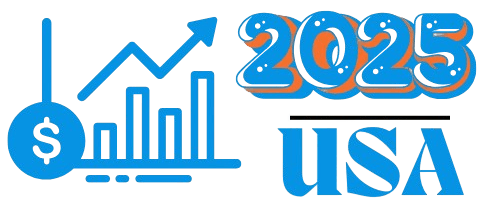Time-tracking software has become an essential tool for businesses and individuals seeking to optimize their work processes and improve overall productivity. As modern work environments evolve, managing time effectively is increasingly important. The ability to track how time is spent on various tasks provides valuable insights. This helps streamline operations, eliminate inefficiencies, and foster a more focused work culture. Time tracking software plays a critical role in achieving these goals. It offers an organized approach to time management, enhancing both individual and team performance. This article explores how time-tracking software can boost efficiency and lead to better resource management, enhanced productivity, and overall business growth.
Understanding Time-Tracking Software
Time-tracking software is a tool that records and monitors the time spent on specific tasks, projects, or activities. It is typically used by employees, freelancers, and teams to track work hours, improve time management, and provide transparency to their workflows. Time-tracking solutions can be used manually or automatically to log time entries, helping users better understand where their time is going.
These tools can range from basic applications that simply track time spent on various activities to sophisticated project management systems. The more advanced systems offer features like time analytics, reporting, invoicing, and team collaboration tools. Some examples of time-tracking software include Toggl, Harvest, Clockify, and RescueTime. Employers can also use this software to monitor employees, ensuring tasks are completed on time.
Key Benefits of Time-Tracking Software in Increasing Efficiency
1. Enhanced Time Management
One of the main advantages of using time-tracking software is its ability to improve time management. By tracking work hours accurately, employees can identify where they are spending their time. This helps highlight which activities consume the most attention, and which tasks are taking longer than expected. This data allows workers to make adjustments in their schedules. They can prioritize tasks more effectively and allocate sufficient time for important activities.
Time-tracking software provides a structured view of how much time is spent on each task or project. When users can see their daily, weekly, or monthly time reports, they can make conscious decisions about how they manage their workday. Over time, this leads to more focused, intentional work patterns that can significantly boost productivity.
2. Improved Resource Allocation
For managers and team leaders, time-tracking software offers insight into how their team members are spending their time. This information can be invaluable for resource allocation. It helps managers understand which tasks or projects require more focus and which ones can be delegated or streamlined. When time data is available, it becomes easier to determine if employees are overburdened, underutilized, or balancing their tasks efficiently.
Additionally, by monitoring time spent on specific activities, managers can ensure that employees focus on high-value tasks, rather than getting bogged down by low-priority work. This enhanced oversight leads to smarter decision-making and ensures that resources are allocated more effectively.
3. Increased Accountability and Transparency
Time-tracking software fosters greater accountability among employees. When workers know their time is being tracked, they are more likely to stay on task and work efficiently. This is especially beneficial in remote and hybrid work environments, where employees are not always physically present to be supervised.
Moreover, time-tracking tools allow teams to create transparent workflows. All members can access real-time data on project progress. This level of transparency builds trust within teams and between employees and management. Everyone can see how much time has been spent on a project. They can identify any bottlenecks and understand the status of tasks. As a result, the entire team becomes more aligned, and communication improves.
### 4. **Better Project and Task Management**
Time-tracking software is integral to effective project and task management. With the ability to track how much time is spent on each task, project managers can adjust timelines, assess progress, and ensure that projects are completed on schedule. It also enables the accurate tracking of billable hours, which is particularly valuable for freelancers or service-based businesses.
For team-based projects, time-tracking tools can highlight potential delays or issues before they become critical. If a project is taking longer than expected, team members can review the data and make the necessary adjustments, such as reallocating resources or adjusting deadlines. In this way, time-tracking software ensures that projects stay on track and are completed within the desired timeframe.
5. Data-Driven Insights for Continuous Improvement
Time-tracking software generates valuable data that can be used to refine work processes and drive continuous improvement. By reviewing reports and time logs, businesses can identify recurring inefficiencies, optimize workflows, and streamline task delegation. Over time, businesses can experiment with different strategies for time allocation and observe which ones yield the best results.
For example, if time logs show that certain tasks always take longer than expected, businesses can investigate the root causes and look for solutions, such as additional training, better tools, or adjustments to the work environment. As a result, businesses can create a feedback loop for improving efficiency, reducing wasted time, and achieving better outcomes.
Time-Tracking Software for Remote and Hybrid Teams
Time-tracking software is particularly beneficial for remote and hybrid teams. With the rise of flexible work arrangements, it can be challenging for managers to monitor how employees are spending their time. Time-tracking tools provide an efficient way to bridge this gap by offering real-time tracking and reporting features that help remote teams stay on task.
Additionally, time-tracking software supports better communication and collaboration among remote workers. By having access to time reports, remote team members can share updates on project progress, align on deadlines, and keep everyone in the loop, regardless of location. This helps maintain the same level of efficiency and organization as a traditional office setting.
Conclusion
Time-tracking software is a powerful tool for increasing efficiency in work processes. By providing real-time data on how time is spent, businesses can enhance time management, optimize resource allocation, improve accountability, and foster transparency within teams. Moreover, it offers valuable insights for continuous improvement and ensures that projects stay on track and are completed efficiently. As more businesses embrace remote and hybrid work models, the use of time-tracking software becomes even more critical in maintaining productivity and achieving organizational goals. For anyone looking to boost their work efficiency, time-tracking software is an indispensable asset.









